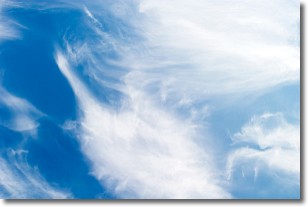Weather Alerts for North Carolina
1. Beach Hazards Statement for: East Carteret
2. Beach Hazards Statement for: Eastern Currituck; Virginia Beach
3. Beach Hazards Statement for: Hatteras Island
4. Beach Hazards Statement for: Northern Outer Banks
5. Beach Hazards Statement for: Ocracoke Island
6. Coastal Flood Advisory for: Coastal Brunswick; Coastal Horry; Coastal Georgetown
7. Coastal Flood Advisory for: Coastal Pender; Coastal New Hanover
8. Coastal Flood Advisory for: East Carteret
9. Coastal Flood Advisory for: Inland New Hanover
10. Coastal Flood Advisory for: Northern Outer Banks
11. Coastal Flood Advisory for: West Carteret; Coastal Onslow
12. Coastal Flood Warning for: Eastern Currituck; Virginia Beach
13. Coastal Flood Warning for: Hatteras Island
14. Coastal Flood Warning for: Ocracoke Island
15. Flood Advisory for: Mecklenburg, NC
16. Flood Advisory for: Pender, NC
17. Flood Warning for: Jones, NC; Lenoir, NC
18. Flood Warning for: Robeson, NC
19. High Surf Advisory for: Eastern Currituck; Virginia Beach
20. High Surf Advisory for: Hatteras Island
21. High Surf Advisory for: Northern Outer Banks
22. Rip Current Statement for: Coastal Pender; Coastal New Hanover
23. Tropical Cyclone Statement for: Mainland Dare; East Carteret; Northern Outer Banks; Ocracoke Island; Hatteras Island
Want more detail? Get the Complete 7 Day and Night Detailed Forecast!
Current U.S. National Radar--Current
The Current National Weather Radar is shown below with a UTC Time (subtract 5 hours from UTC to get Eastern Time).

National Weather Forecast--Current
The Current National Weather Forecast and National Weather Map are shown below.

National Weather Forecast for Tomorrow
Tomorrow National Weather Forecast and Tomorrow National Weather Map are show below.

North America Water Vapor (Moisture)
This map shows recent moisture content over North America. Bright and colored areas show high moisture (ie, clouds); brown indicates very little moisture present; black indicates no moisture.

Weather Topic: What are Wall Clouds?
Home - Education - Cloud Types - Wall Clouds
 Next Topic: Altocumulus Clouds
Next Topic: Altocumulus Clouds
A wall cloud forms underneath the base of a cumulonimbus cloud,
and can be a hotbed for deadly tornadoes.
Wall clouds are formed by air flowing into the cumulonimbus clouds, which can
result in the wall cloud descending from the base of the cumulonimbus cloud, or
rising fractus clouds which join to the base of the storm cloud as the wall cloud
takes shape.
Wall clouds can be very large, and in the Northern Hemisphere they generally
form at the southern edge of cumulonimbus clouds.
Next Topic: Altocumulus Clouds
Weather Topic: What are Altostratus Clouds?
Home - Education - Cloud Types - Altostratus Clouds
 Next Topic: Cirrocumulus Clouds
Next Topic: Cirrocumulus Clouds
Altostratus clouds form at mid to high-level altitudes
(between 2 and 7 km) and are created by a warm, stable air mass which causes
water vapor
to condense as it rise through the atmosphere. Usually altostratus clouds are
featureless sheets characterized by a uniform color.
In some cases, wind punching through the cloud formation may give it a waved
appearance, called altostratus undulatus. Altostratus clouds
are commonly seen with other cloud formations accompanying them.
Next Topic: Cirrocumulus Clouds
Current conditions powered by WeatherAPI.com




